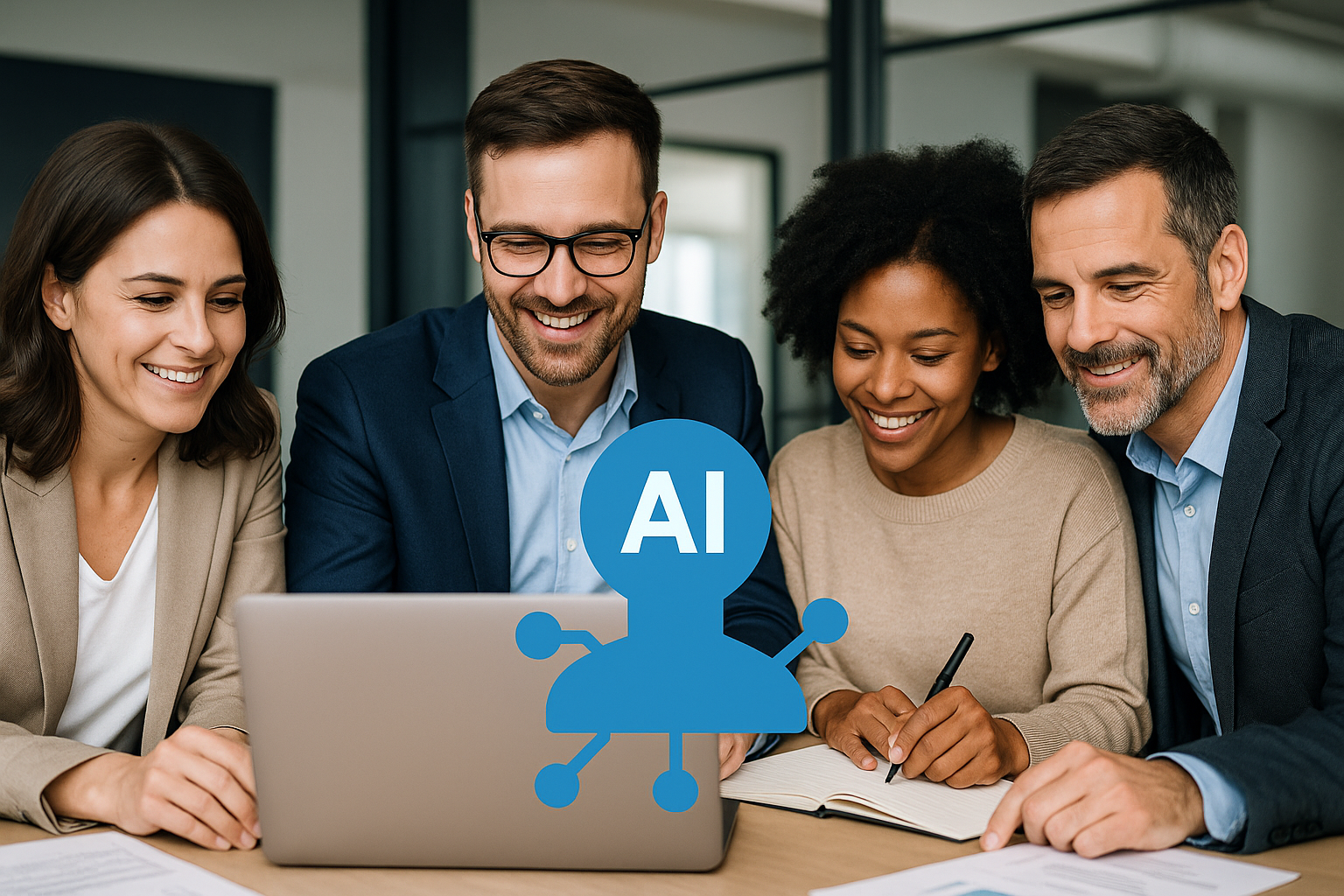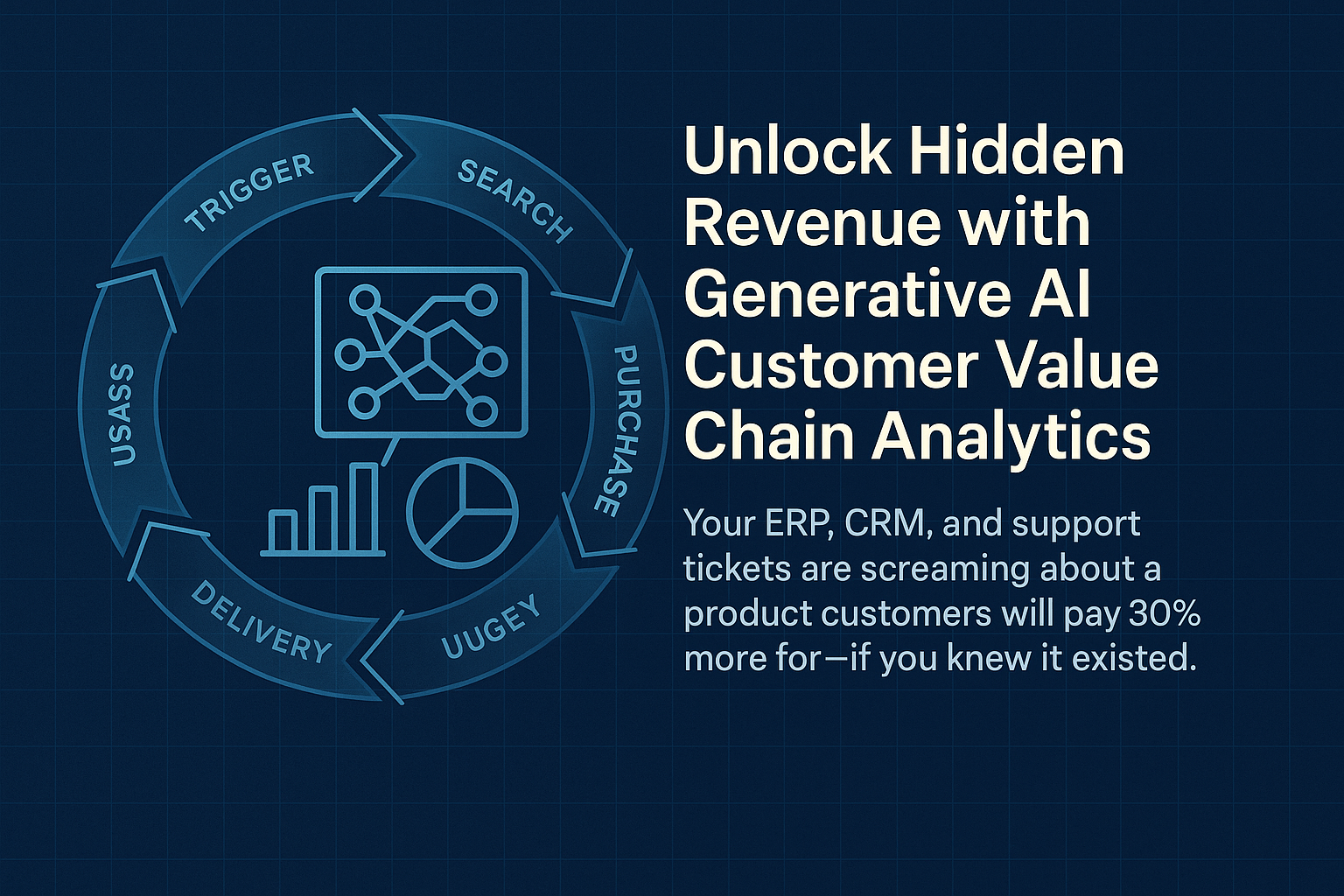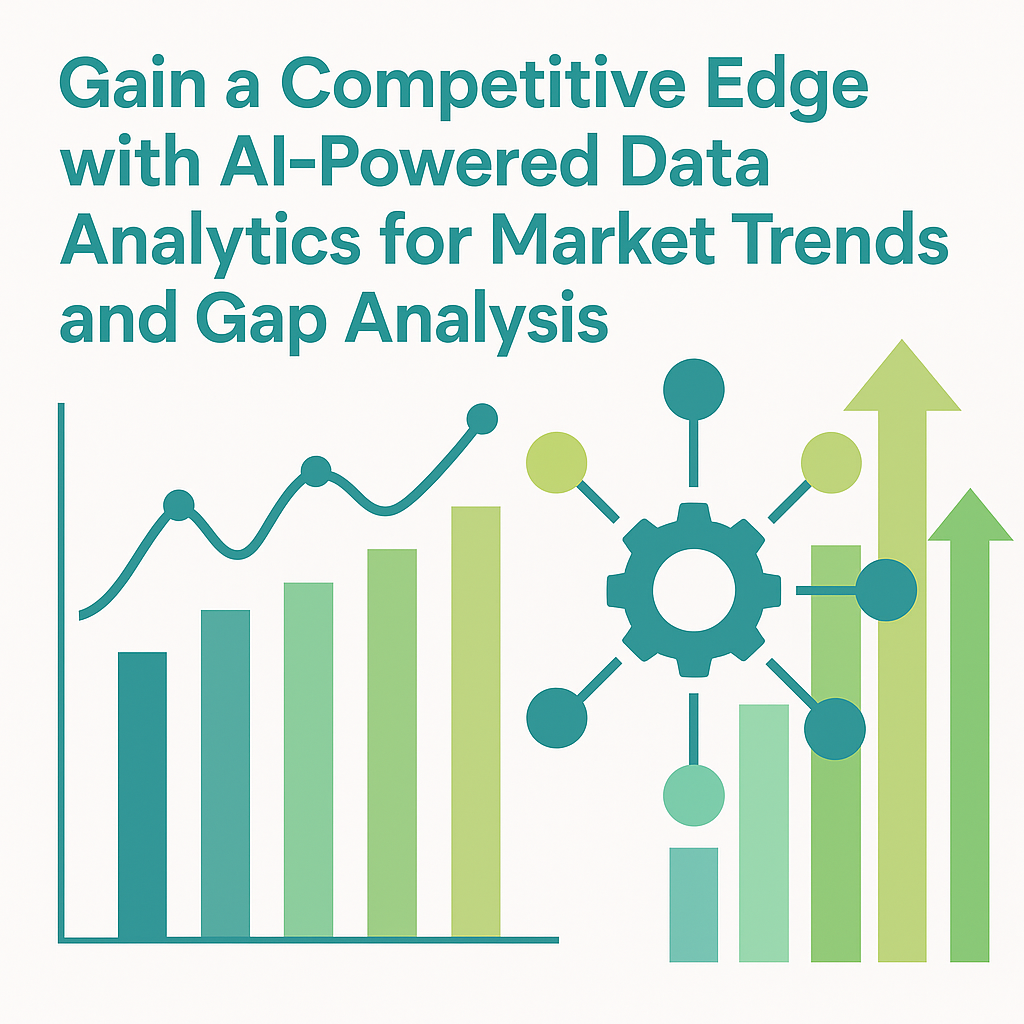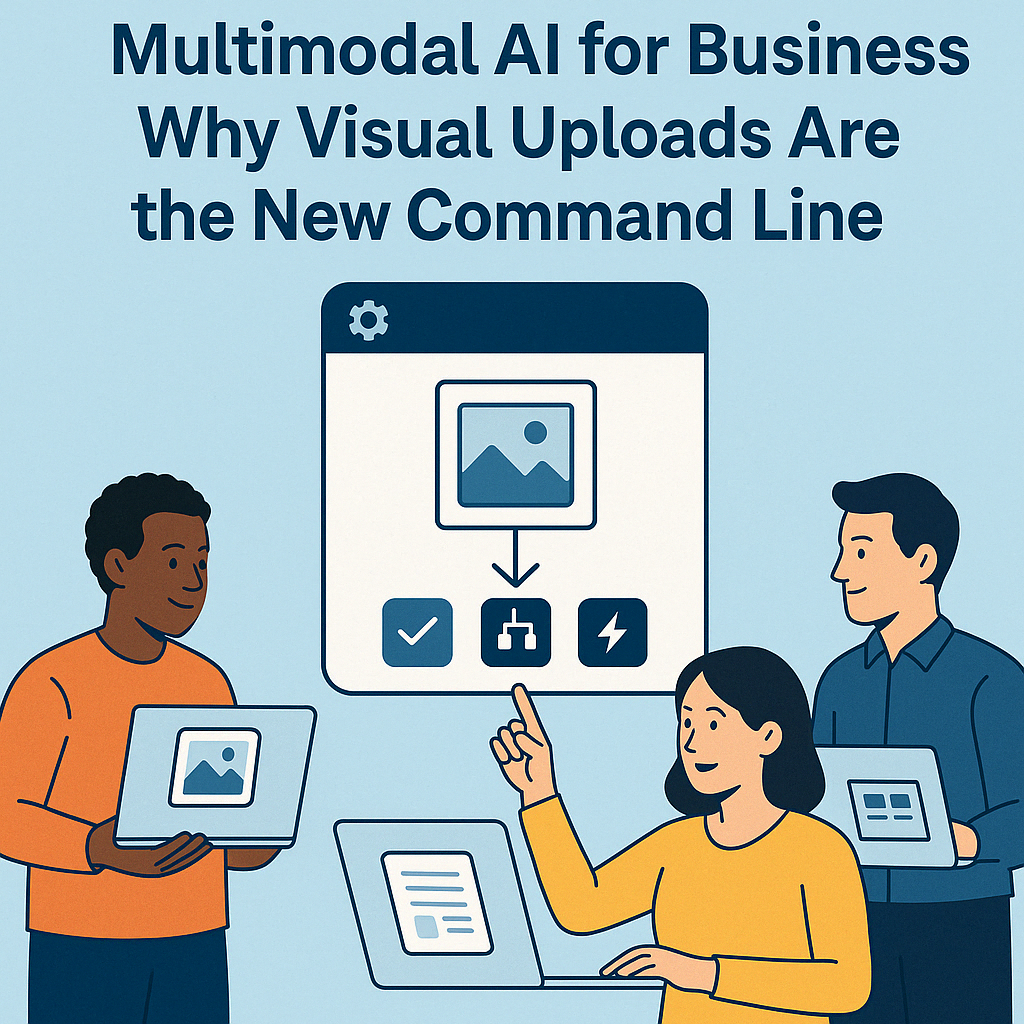
AI is transforming the way we work—but not in the way many feared.
For CEOs and business owners leading mid-sized companies, the anxiety around AI often centers on employees’ fear of job loss. But the real story—the one backed by data and already unfolding inside high-performing organizations—isn’t about replacement. It’s about AI workforce integration: combining human expertise with AI-driven efficiency to create something stronger than either could achieve alone.
The businesses that understand this shift—and act on it—are pulling ahead.
Table of Contents
Frontier Firms Are Redefining Teamwork
Microsoft’s recent 2025 Work Trend Index introduced the concept of Frontier Firms: companies that are adopting AI early and deeply, like us here at Inkyma. These organizations aren’t just using AI for a few tasks—they’re building AI into the fabric of how their teams operate. The result? Greater productivity, faster decision-making, and a sharp competitive edge.
But what sets them apart isn’t just the tools—it’s the structure. These businesses are embracing hybrid labor models where AI acts as a co-worker, not just software. The outcome is AI workforce integration that supports, scales, and enhances the work of existing subject matter experts—not replaces them.
AI as a “Who,” Not Just a “How”
To make sense of this shift, consider Dan Sullivan’s Who Not How framework. It challenges leaders to stop asking, “How do I get this done?” and instead ask, “Who can help me do this?”
In the age of AI, that “who” doesn’t always have to be a person.
AI can now function as a digital teammate—handling the repetitive, time-consuming tasks that slow your best people down. Think of it as giving each of your experts their own high-efficiency assistant.
For example:
- Your customer service lead gets an AI “who” to triage incoming messages and draft responses.
- Your operations manager gets an AI “who” to summarize internal reports and flag exceptions.
- Your marketing strategist gets an AI “who” to prep content briefs or analyze campaign performance.
This is AI workforce integration in action: a clear, strategic way to multiply the output of your existing team without increasing headcount.
And as this mindset takes root—where AI is seen as a teammate, not a tool—your team naturally begins to evolve.
Your employees will start identifying where they’re still bogged down, and rather than asking for more people, they’ll ask:
“Can I get an AI to handle this part of my workload?”
In other words, your team begins hiring their own AI support—intelligently, proactively, and aligned with your strategic goals. That’s when AI shifts from being a one-time implementation to a self-scaling capability inside your business.
What Hybrid Labor Looks Like in Practice
Let’s break this down further. Here are real-world ways mid-sized companies are blending human intelligence with AI support:
1. Operational Support for Experts
AI can prep reports, transcribe meetings, and summarize documents. Instead of spending hours on busywork, your top performers stay focused on execution and insight.
2. Co-Piloting Sales and Service
AI handles FAQs, appointment scheduling, and first-touch interactions. Your team steps in for high-value conversations where trust and nuance matter.
3. Strategic Decision Support
AI helps process and surface patterns across financials, customer feedback, and operational data. Your leadership team can focus less on spreadsheets and more on strategy.
Each of these is an example of hybrid labor working—not to replace roles, but to amplify the value of the roles you already have.
How Leaders Should Think About AI Workforce Integration
To lead this shift, you don’t need to be a tech expert—you need to think differently. AI workforce integration isn’t a tech project. It’s a leadership mindset.
Mindset Shift:
Your people aren’t being replaced. They’re being backed up and protected from burnout. AI relieves them of low-leverage tasks, so they can focus on meaningful, high-impact work—the kind they were actually hired to do.
Strategic Shift:
Instead of defaulting to “We need to hire someone,” ask, “Can this be handled by an AI agent instead?”
Begin reallocating portions of your hiring or operations budget toward AI development. In many cases, the cost of building and maintaining multiple AI agents can be equal to—or less than—adding a single new full-time employee.
- Hiring an admin? You might build three AI agents instead: one for scheduling, one for inbox management, and one for reporting.
- Thinking of adding another analyst? An AI can now scan and summarize complex data sets daily, without fatigue and doesn’t need time off.
This isn’t about eliminating roles. It’s about getting more leverage from the team you already have by augmenting them with digital teammates.
Cultural Shift:
Position AI as a partner that makes everyone better—not a surveillance tool or a job threat.
To create this shift:
- Start with your champions: Give AI support to your top performers first, and let others see the impact.
- Make success visible: Share before/after stories inside your company. Let teams hear how AI saved someone hours or made a complex task easier.
- Invite experimentation: Encourage team members to suggest tasks they’d offload to an AI if they could. This gets them thinking proactively—not defensively—about AI.
When your culture starts asking, “Who is your AI?” instead of “Is AI going to replace me?”—that’s when you know the shift has taken hold.
AI Workforce Integration Is Your Advantage—If You Start Now
The companies winning right now are those who are leaning into AI workforce integration. They’re not buying tools and hoping for the best—they’re building structures and strategies where AI works alongside their team to unlock efficiency, creativity, and focus.
As this hybrid model becomes the new normal, the question isn’t whether your business will adopt it—it’s whether you’ll lead it or lag behind.
Let’s Talk About How This Could Work in Your Business
If you’re ready to explore how AI can support (not replace) your team, Schedule A Strategy Session and let’s talk about it. At Inkyma, we help businesses like yours develop strategic AI workforce integration plans—tailored to your goals, your people, and your systems.
The future of work isn’t fully automated. It’s hybrid—and your experts are still essential.
Is AI really advanced enough to take on meaningful work inside my business?
Yes—and that’s exactly the point of AI workforce integration. Today’s AI can summarize reports, draft emails, analyze data, answer routine customer questions, and more. While it’s not a replacement for strategic human thinking, it’s highly effective at offloading repetitive, time-consuming tasks. The key is identifying where your team is doing low-leverage work and deploying AI agents to take that on—so your experts can stay focused on what matters.
How do I know which roles or tasks are right for AI support?
Start by asking your team: “Where are you spending time on things that don’t require your expertise?” These are prime opportunities for AI integration. Look for tasks that are repetitive, rules-based, or data-heavy—like inbox triage, scheduling, reporting, research, or content prep. From there, you can build custom AI agents that function like digital teammates, not just tools. This isn’t about removing people—it’s about supporting them where it counts.
How do I introduce AI to my team without creating fear or resistance?
The cultural rollout is just as important as the technology. Begin by positioning AI as a resource to prevent burnout and increase focus—not a threat. Pilot it with your top performers first and let them share their wins. Create visibility into the positive impact: saved hours, less busywork, more clarity. When people see that AI is there to help—not replace—they become active participants in shaping the future of their own roles.










